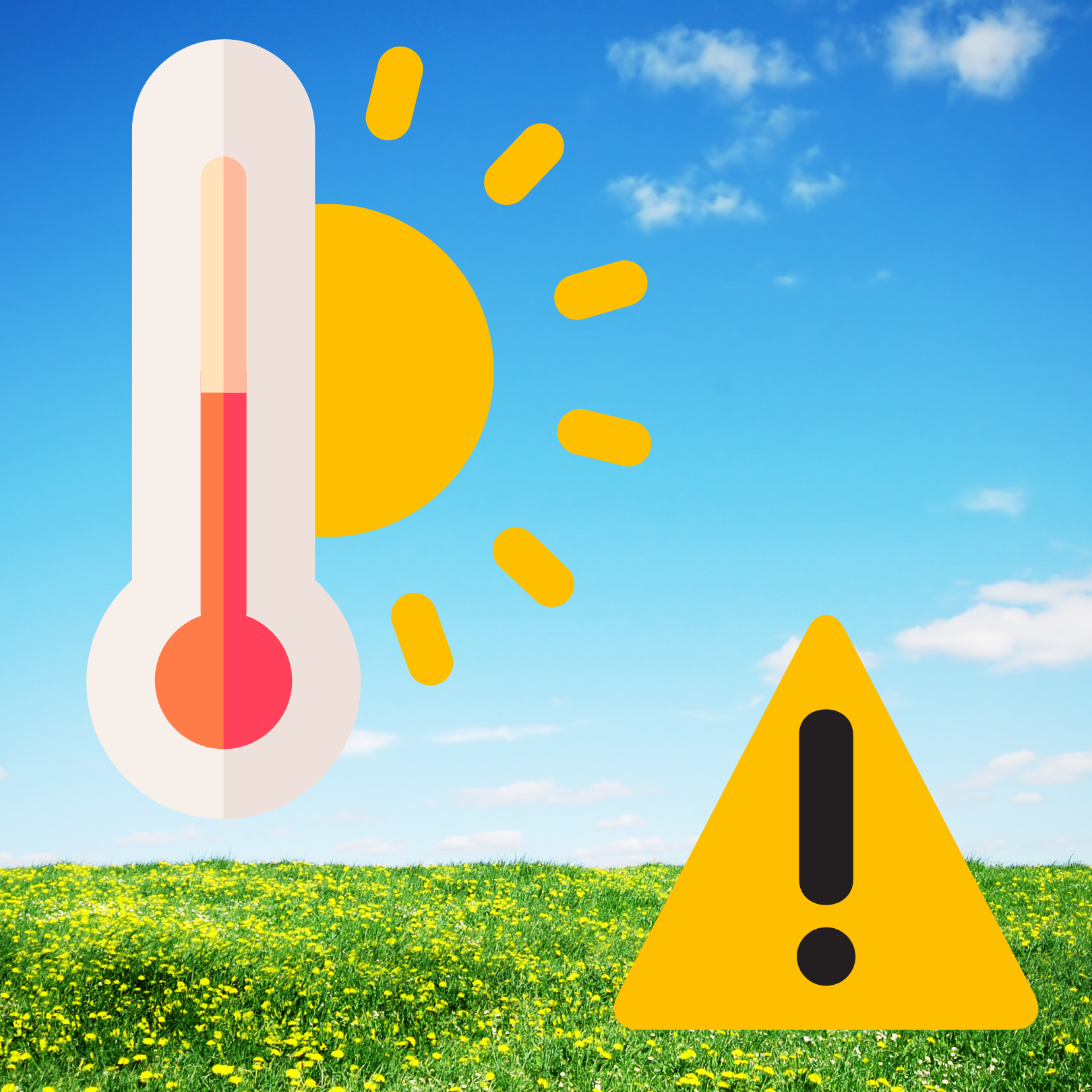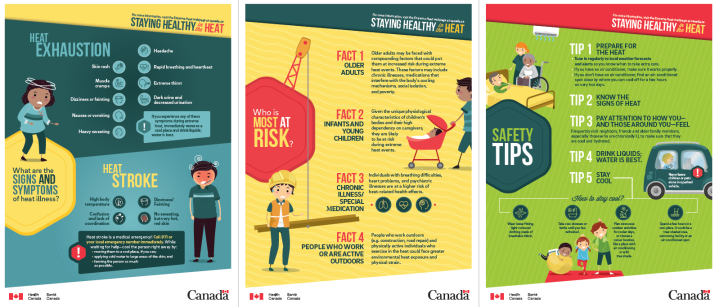Protecting Yourself in Extreme Heat
People suffer heat-related illnesses when their body temperature quickly rises and they are unable to cool themselves. The risk of heat-related illness increases with the amount of time spent in the heat, the temperature and an individual’s sensitivity to heat. As a result of climate change, extreme heat events are posing a growing public health risk in Canada.
Here are some tips to avoid heat related illness:
- Drink plenty of fluids, regardless of your activity level
- Avoid caffeinated drinks or alcoholic beverages as these can cause you to lose more body fluid
- Avoid strenuous work or sports activities during the intense sunlight hours from 11 a.m. to 3 p.m. when the UV index is three or higher between April and September
- Wear light-coloured clothes, a wide-brimmed hat, seek shade, and wear sunscreen with an SPF 30
- For more information, check out our sun safety page
- Do not leave children or pets in vehicles

- Pay special attention to vulnerable populations including small children, neighbors, individuals with health conditions and older adults as they are at higher risk of developing heat exhaustion and heat stroke.
Environment Canada issues heat warnings as they are predicted.
Sign up for Updates
For the most up to date information on weather, visit Environment Canada’s website at: www.weather.gc.ca.
For more information:
Infographic: Staying Healthy in the Heat

Keep children cool! Protect Your Child from Extreme Heat
You’re active in the heat. You’re at risk! Protect Yourself from Extreme Heat
It’s way too hot! Protect Yourself from Extreme Heat
Resources for Health Care Workers & Professionals:
20220705/nd